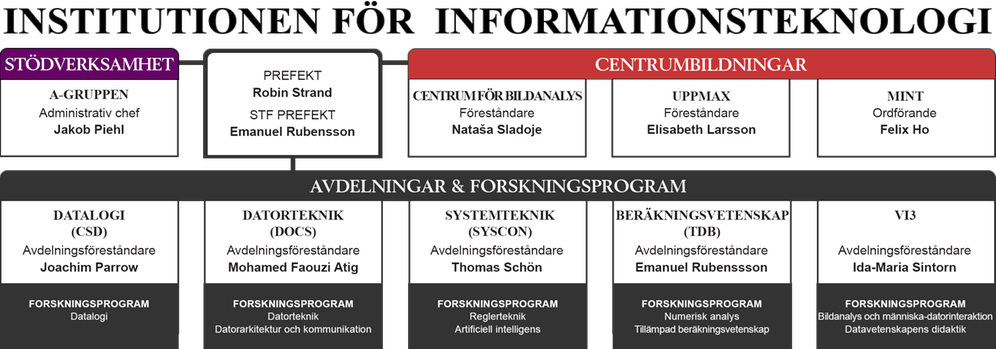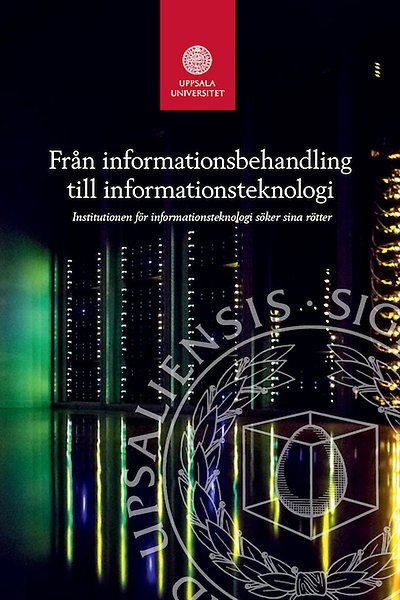About Department of Information Technology

We educate the data scientists of the future!
The Department of Information Technology is a dynamic and innovative research and educational environment where we jointly explore the boundaries of computer science and information technology. By combining ground-breaking research with practical application, we create the conditions for generating new technology that meets the challenges of the future. We educate the next generation of computer scientists to be well prepared for both a national and an international career in both business and research. Our researchers and students collaborate with actors from both business and society. We collaborate with large tech giants, authorities, regions and smaller local companies.
Research at the department spans 15 areas, including artificial intelligence, cyber security and computing education research. We operate within a rich scientific field where we conduct both basic research and applied projects. Our fields of application span technology, biology, medicine, economics and psychology, which is reflected in our extensive collaboration across various academic disciplines as well as with business and the public sector.
The department also houses the center formation UPPMAX (Uppsala Multidisciplinary Center for Advanced Computational Science), an e-infrastructure that provides large-scale resources for calculations and storage for researchers both locally and nationally.
Vår organisation
Användbara länkar
Short facts
In 2023, the Department of Information Technology emerged as the third largest department at Uppsala University, according to available data:
- The department generated a turnover of approximately 343 million.
- Every year, over 5000 undergraduate students participate in one or more courses offered by the department.
- The department has over 350 employees, including 120 teachers and 120 PhD students.

The department is divided into five divisions
Division of Scientific Computing
Research in the Scientific Computing Division has its roots in numerical analysis for partial differential equations. Nowadays, it also includes mathematical modeling, algorithms, analysis, software development, high performance computing and computational models for data analysis based on observations in many different application areas.

Division of Computing Science
The research and teaching at the Division of Computing Science aims to make software design and verification easier, more efficient and more reliable. We develop and teach methods, languages and tools and work in both applied and theoretical research.

Division of Computer Systems
Research in Computing Systems is concerned with the development of new and improved computer systems, such as computer networks, parallel computers and embedded systems. Research ranges from specification, verification, and analysis, to experimental system development.
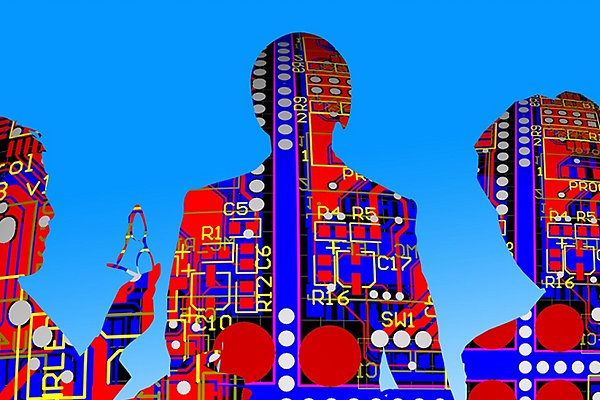
Division of Systems and Control
The world is increasingly dependent on reliable control systems and efficient extraction of information from signals and data sets. The Division of Systems and Control conducts research and teaches in the modeling, analysis, synthesis and control of dynamic systems to drive developments in these areas.

Division of Vi3: Image Analysis, Human Machine Interaction, Computing Education Research
The Vi3 division brings together a unique combination of expertise in computerized image analysis and human-computer interaction. It combines mathematics, psychology and robotics in research in both theory and applications.
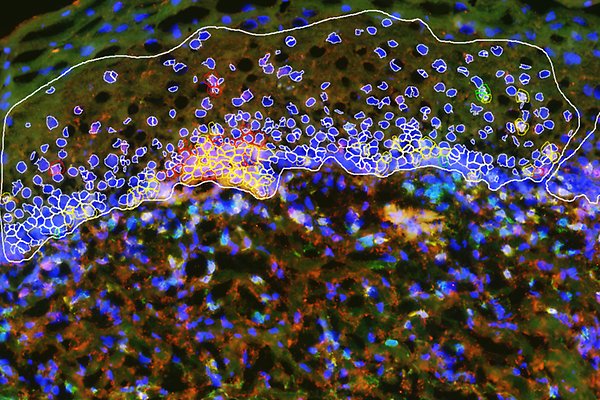
The history of the department and Polacksbacken
Information Technology Center (ITC)
.jpg)
The Information Technology Center (ITC) is the name of the premises occupied by the university in the old Polacksbacken barracks area. The area was previously called Mathematics and Information Technology Centre (MIC), however, the name was changed when the Department of Mathematics moved their offices into the Ångström laboratory in 2008.
The founding of the department
The Department of Information Technology was founded in January 1999 as the result of the merging of a number of departments and divisions:
- The Department of Computing Science and ADB was split in two: Computing Science became the Division of Computing Science at the Department of Information Technology, and ADB was integrated into to the Department of Informatics.
- The Department of Computer Science became the Division of Computer Science.
- Parts of CMD, or the Center for Human Computer Studies, became the Division of Human-Computer Interaction. About half of the centre’s activities were relocated to the Department of Informatics.
- The Division of Systems and Control, which was a part of the Department of Applied Materials Science, became a division of the new Department of Information Technology.
- Finally, the Department of Scientific Computing was turned into the Division of Scientific Computing.
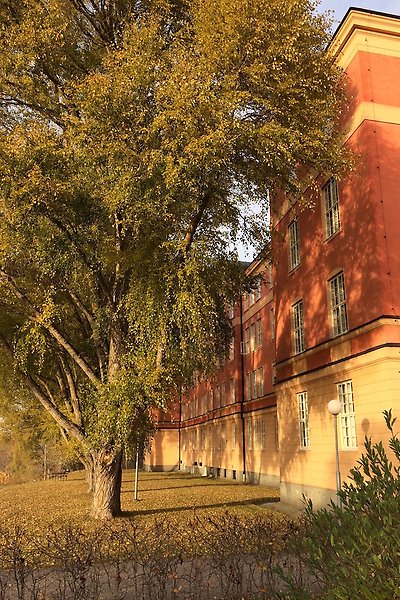
Anniversay book
The various sections of the book are written by individuals who participated in the development of the department and its divisions themselves, many of who belong to the pioneering generation that already existed when the respective divisions were formed. Our ambition has been to simultaneously provide a true account of events while also presenting an element of personal stories. Another ambition was to make the text accessible and interesting for those who have subject knowledge within the computer area as well as for a wider audience with an interest in how education and research in this area has emerged at Uppsala University.
Read or download the book here. (In Swedish only)
Recent development at ITC
- The Centre for Image Analysis (CBA) became a part of the Department of Information Technology in January of 2011. CBA pursues research, development and education in Computerized Image Analysis and is a joint venture between Uppsala University and SLU.
- In January of 2012, the Division of Human-Computer Interaction was merged with CBA and together the two formed the Division of Visual Information and Interaction (Vi2).
Polacksbacken
Polacksbacken was a meeting ground and camping site for Upplands regiment from 1680, when the regiment had barracks built on the site, until 1912. Between 1928-83 the buildings lodged the Army School for Non-commissioned Officers (“kompaniofficersskola”). The Uppland regiment of the Swedish Army moved to Enköping in 1982.
The name of the area is mentioned in 1663 as Pålack Backen (Polish Hill), and in 1666 as Polacksbaka (same meaning, but different spelling). It may have been inspired by the coronation of the Swedish king Sigismund in Uppsala in 1594. (Sigismund's mother was polish and he grew up in Poland)

